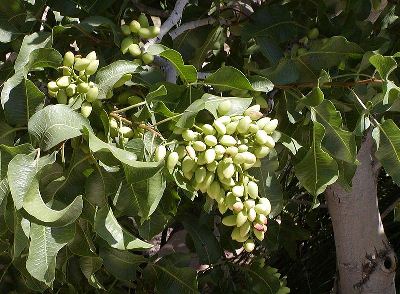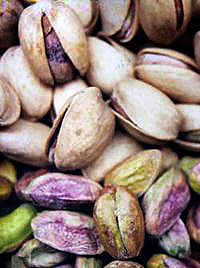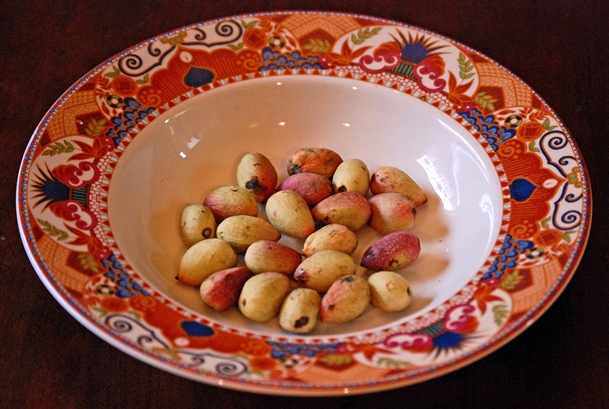I saw these in the market the other day and I couldn’t resist a few handfuls. This is an unusual presentation for them, so I’m wondering if you know which Silk Road Ingredient they are. Hint: They are soft and slightly sweet when eaten or used at this stage. (Contest closed as of 11/1/2012 – 9 AM EST)
_____
I’ll leave it up for a few days and then change the caption and add a comment and more information about the mystery ingredient. Earliest correct answer gets a copy of The Silk Road Gourmet Volume One.

The usual presentation of pistachio nuts is with the yellow and blush-colored skin removed to reveal a hard “shell” with the edible “nut” inside the shell as pictured here. However, the mystery picture is how pistachios come off the tree and are dried or processed for oil or pistachio paste. Our local Persian market had a big box of them so I scored a few for my family and for readers of the blog.
Raw pistachios taste very different from commercial nuts. They are soft and very subtly flavored with just a touch of sweetness. The strong flavor we generally identify with them comes largely from the salt or sugar we add to them post processing.

For modern recipes for pistachios, see the Silk Road Gourmet Volume One, which includes recipes for the Iranian, omelet-like Kuku with Green Peas and Pistachios and the Azeri confection Pakhlava Pistachios are also important ingredients in the Armenian Sweet Orange-Saffron Sauce, and are used along with other ingredients to fill pastries, flavor stews and garnish many other Silk Road dishes with a bit of extra flavor. (Words and Photo of Fresh Pistachio Nuts by Laura Kelley, Photo of Pistachio Nuts Ripening on the Tree by Stan Shubs, and Pistachios with Skins Removed from Wikimedia).

